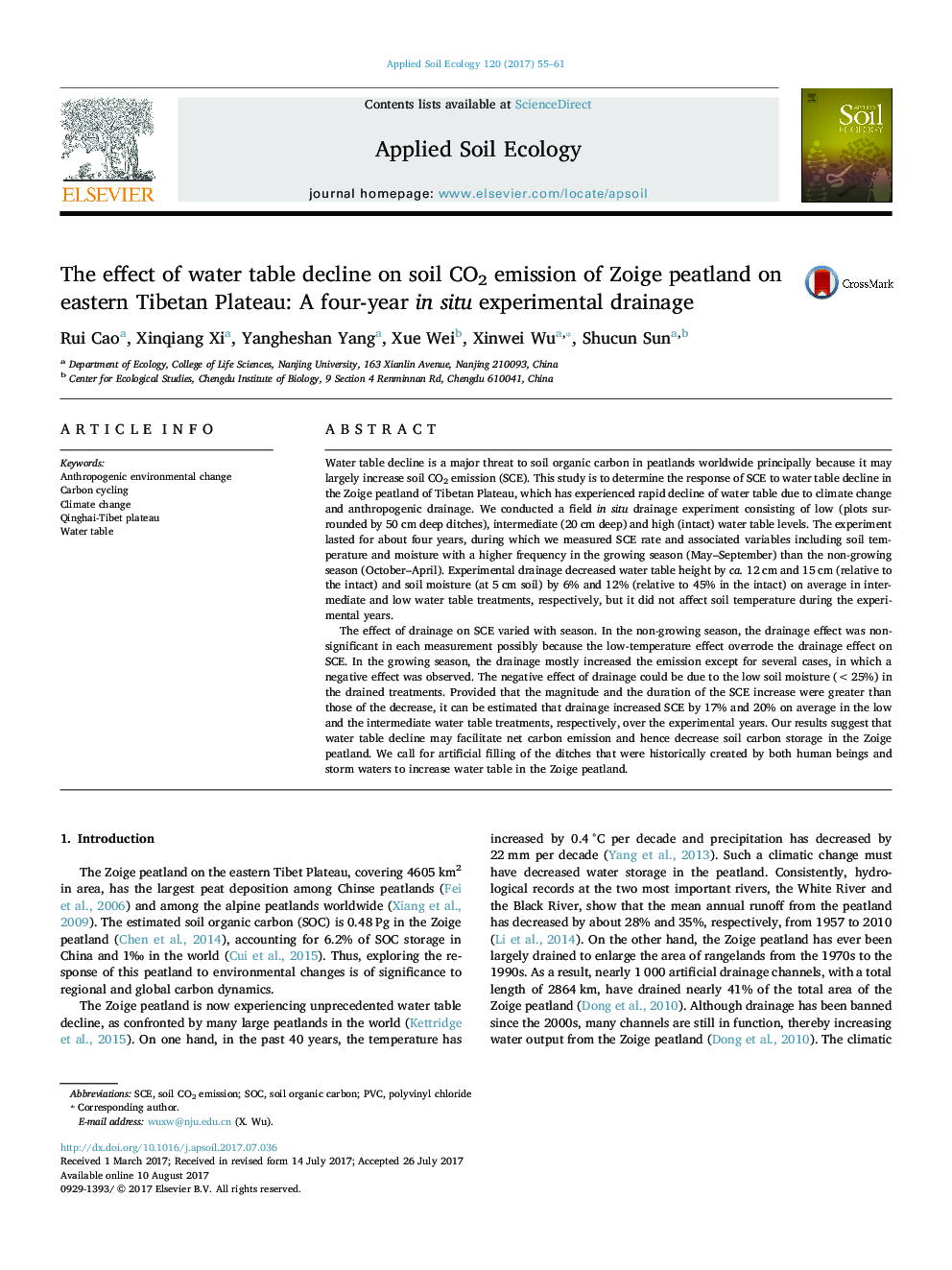| Article ID | Journal | Published Year | Pages | File Type |
|---|---|---|---|---|
| 5742571 | Applied Soil Ecology | 2017 | 7 Pages |
â¢Short-term water table decline increases soil CO2 emission.â¢Water table decline significantly increases soil CO2 emission in the growing season.â¢Water table decline does not change soil CO2 emission in the non-growing season.
Water table decline is a major threat to soil organic carbon in peatlands worldwide principally because it may largely increase soil CO2 emission (SCE). This study is to determine the response of SCE to water table decline in the Zoige peatland of Tibetan Plateau, which has experienced rapid decline of water table due to climate change and anthropogenic drainage. We conducted a field in situ drainage experiment consisting of low (plots surrounded by 50Â cm deep ditches), intermediate (20Â cm deep) and high (intact) water table levels. The experiment lasted for about four years, during which we measured SCE rate and associated variables including soil temperature and moisture with a higher frequency in the growing season (May-September) than the non-growing season (October-April). Experimental drainage decreased water table height by ca. 12Â cm and 15Â cm (relative to the intact) and soil moisture (at 5Â cm soil) by 6% and 12% (relative to 45% in the intact) on average in intermediate and low water table treatments, respectively, but it did not affect soil temperature during the experimental years.The effect of drainage on SCE varied with season. In the non-growing season, the drainage effect was non-significant in each measurement possibly because the low-temperature effect overrode the drainage effect on SCE. In the growing season, the drainage mostly increased the emission except for several cases, in which a negative effect was observed. The negative effect of drainage could be due to the low soil moisture (<25%) in the drained treatments. Provided that the magnitude and the duration of the SCE increase were greater than those of the decrease, it can be estimated that drainage increased SCE by 17% and 20% on average in the low and the intermediate water table treatments, respectively, over the experimental years. Our results suggest that water table decline may facilitate net carbon emission and hence decrease soil carbon storage in the Zoige peatland. We call for artificial filling of the ditches that were historically created by both human beings and storm waters to increase water table in the Zoige peatland.
